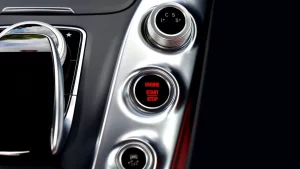Safely Jump-Starting Your Car


Safely Jump-Starting Your Car


Introduction
A dead car battery can be a frustrating experience, especially when you’re in a hurry. However, jump-starting your car can quickly get you back on the road. It’s essential to follow the correct procedure to ensure your safety and prevent any damage to your vehicle. In this article, we will provide you with step-by-step instructions on how to safely jump-start your car.
Step 1: Prepare the Necessary Tools
Before attempting to jump-start your car, gather the following tools:
Jumper cables: Ensure you have a set of jumper cables in your car at all times. They should be in good condition, without any exposed wires or damage.
Safety goggles and gloves: Protect your eyes and hands by wearing safety goggles and gloves while working with the battery.
A working vehicle: You will need another car with a fully charged battery to jump-start your car. Ensure the working vehicle is parked close enough to reach the dead battery with the jumper cables.
Step 2: Position the Cars
Follow these steps to position the cars correctly:
Park both vehicles in neutral and engage the parking brakes.
Turn off the ignition and any electrical components in both cars, such as headlights, radios, and air conditioning.
Open the hoods of both vehicles and locate the batteries.
Step 3: Identify the Battery Terminals
Identify the battery terminals on both vehicles:
The battery terminals are usually marked with a “+” and “-” sign.
The positive terminal is typically red and may have a (+) symbol.
The negative terminal is usually black and may have a (-) symbol.
Step 4: Connect the Jumper Cables
Now it’s time to connect the jumper cables:
Take one end of the red jumper cable and attach it to the positive terminal (+) of the dead battery.
Attach the other end of the red jumper cable to the positive terminal (+) of the working battery.
Take one end of the black jumper cable and attach it to the negative terminal (-) of the working battery.
Attach the other end of the black jumper cable to a metal, unpainted surface on the engine block or vehicle frame of the dead car. Avoid attaching it directly to the negative terminal of the dead battery.
Step 5: Start the Working Vehicle
Start the working vehicle and let it run for a few minutes. This will allow the battery to transfer its charge to the dead battery.
Step 6: Start the Dead Vehicle
Now it’s time to start the dead vehicle:
Try to start the dead vehicle. If it doesn’t start, check the cable connections and ensure they are secure.
Once the dead vehicle starts, let it run for a few minutes to allow the battery to recharge.
Carefully remove the jumper cables in the reverse order of how you connected them, starting with the black cable from the previously dead car’s frame or engine block.
Step 7: Let the Engine Run
After successfully jump-starting your car, let the engine run for at least 10-15 minutes. This will allow the alternator to recharge the battery fully. Avoid turning off the engine immediately, as the battery may not have regained sufficient charge.
Step 8: Get Your Battery Checked
While jump-starting your car can provide a temporary solution, it’s crucial to have your battery checked to determine the underlying cause of the failure. Visit a trusted mechanic or an auto parts store to have your battery tested. If necessary, replace the battery to prevent future issues.
Conclusion
Knowing how to safely jump-start your car can save you from the inconvenience of a dead battery. By following the step-by-step instructions provided in this article, you can jump-start your car without risking your safety or causing damage to your vehicle. Remember to always wear safety goggles and gloves, use proper jumper cables, and follow the correct sequence when connecting and disconnecting the cables. If you’re unsure or uncomfortable with the process, don’t hesitate to seek assistance from a professional.








